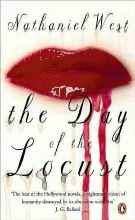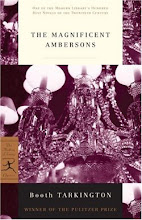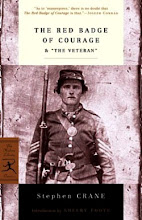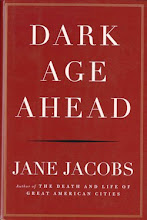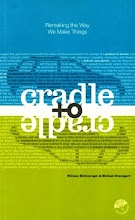
Memories fade and dissipate as time washes over us, like the endless waves pounding the sand. There was sanctuary in being able to return to the places of my youth to reconstruct the physical reality of a time of innocence long past. Walking the streets, the sun touching my skin, inhaling the ocean breeze awakens my sleeping mind. I am able to retouch the tiny fragments of life’s experiences, bringing them slightly into better focus. Like a discarded mosaic each small chip of colored glass captures a ray of sunlight illuminating a deep forgotten detail of the past.
It is with a sullen heart I morn these places that have succumb to insufferable neglect and now been wiped clean from the land, taking with them my ability to travel back in time to converse with who I was. It is a loss as painful as an unrequited secret love that was hidden from the world, but faithfully cherished in the heart for decades without compromise. My loss is intensely personal and deeply troubling. The withering of human flesh is accepted as part of an invariable march to death, but never once did I consider the built world as temporal as it now appears. It is inconceivable how a place can go from a vibrant exclusive center of social prominence and activity to a demolished ghetto of vacant lots in less than forty years.
.
For six years in junior high and high school I casually dated a catholic girl from Asbury Park, named Gloria. Her father emigrated from Sicily as a young boy. The entire extended family lived in a large turn of the century home on Second Street. Her grandmother spoke only Italian. Gloria’s mother emigrated from Hungary in her early twenties and when upset she would revert to screaming at you in Hungarian. Dinner at the house was a true old world experience which would start on Sunday about 2:00 pm and last to about 6:00 pm which most of the time everyone was yelling at each other.
Gloria’s father was a general practice doctor. Three rooms of the family house on the ground floor were set aside for the doctor’s office. What was unusual was that the doctor’s office divided the family’s living spaces and it was necessary to travel through the waiting room and examination room to get from the living room to the dining room and kitchen. It was not uncommon to sit in the waiting room chatting with the patients until the exam room door would open so you could get to the kitchen.
It remains a sad memory when I lost touch with Gloria in college after a tragic event that destroyed and scattered the family. Gloria’s older sister Rosanne was a chronic drug addict hopelessly addicted to the prescription drugs which were always available in the doctor’s office at home. No matter how well secured or hidden Rosanne would find them. When home no longer contained the needed drugs she took to the streets in the emerging drug culture along the Jersey shore. There were at least six failed interventions and attempted rehabilitations before it came to a sad end. One hot summer night Rosanne came home to steal drugs from the doctor’s office and Gloria’s father tried to stop her. It apparently escalated into a violent confrontation which Rosanne picked up a pair of scissors and on the front porch of the house in front of the neighbors and family members stabbed her father to death.
Shortly after without an income the family lost the house and Gloria moved her destitute mother near her while she was going to college at Seaton Hall studying to be a nurse. Gloria’s mother never recovered from the trauma and past away before Gloria graduated college. Rosanne was declared insane and has been institutionalized since that day. The house is a sad reminder of lost innocence.
I spent most of my time in Asbury Park during these years. Before any of my friends could drive I would take the bus after school from Red Bank to Asbury Park five nights a week. The last bus back to Red Bank was at 10:45 pm and if we missed it we would sleep on the beach taking the early morning bus back just in time to go to school. During this period Asbury Park was slightly past its zenith and was in transition.
Founded in 1887, Asbury Park was once one of the Northeast's most popular seaside resorts. In the early 1900s, people who now vacation in the Hamptons would've had their summer homes in Asbury Park. In the early to mid 1900s, Asbury Park was resilient, rebuilding entire sections of the beachfront after surviving devastating fires and hurricanes.
David B. Sokol a writer for Metropolis recalled the significance of the city’s vision in his article “Preserving Asbury Park's Progressive History”.
Now close your eyes and imagine Asbury Park without this decrepitude and you can see that Bruce Springsteen's adopted hometown is also home to great urban design. This dates back to 1873 and James Bradley's plan for the place that blended urban, suburban, and resort types in a way that fostered comfortably traditional and uniquely progressive design.
The city streets tell this story. Avenues, lined with residences and hotels, flare outward near the beach in order to capture ocean breezes and to more widely distribute them. In the downtown area south of the central Asbury Avenue, the pavement assumes a different personality. The triangulated street grid signals your placement in this high-density commercial district.
Asbury Park's waterfront offered another variation on scale. The palaces and the hotels increased residential density by the water, exactly where people wanted to be. Today's voids were once crowded with the theater of the street. And the waterfront served as a blank canvas for the exuberant Victorian and Populuxe architecture of the shoreline landmarks."
Between 1871 to the time of his death in 1921, James Bradley was deeply involved in every aspect of the development of Asbury Park. He planned the layout of the area before the first structure was built. He set aside park lands and waterfront areas. The urban scale blocks, remarkable in the 100-foot width of the avenues, flaring to 200 feet at the ocean, to this day provide a feeling of spaciousness often lacking in seaside resorts.
Bradley took full advantage of the natural assets surrounding and contained within the 500 acre tract of land he purchased. The land surrounding the three lakes within city limits were designed as public areas. He planned a plank walk along the ocean for strolling and restful enjoyment of the shore area. Bradley wanted a special character for Asbury Park and donated land to religious and civic groups, offering only large residential lots. Most of the churches front 100-foot-wide Grand Avenue and are surrounded by large Victorian-style "summer" homes.
Asbury Park, in 1881, was the first seaside resort on the American continent to adopt a perfect sanitary sewer system. Water was supplied to the city from the very beginning from artesian wells. In 1885, a trolley system was constructed that circulated from the train station through the shopping district and beachfront and then through the residential areas. Asbury Park's trolley system was the second electric system in the United States; previous trolleys were horse drawn. Asbury Park was the first community of the Monmouth County coast to use the electric light service starting June 20, 1885. The first "Baby Parade" was held in 1890 and became a yearly event. In less than 25 years Asbury Park had become renowned throughout the country for its grandeur.
In “A Brief History of Asbury Park”, Florence Moss describes the resilience of Asbury Park during its rejuvenation from disasters.
“On April 5, 1917, Asbury Park experienced its greatest fire. Four blocks of hotels, boarding houses and residences, part of the Boardwalk, and the First Methodist Episcopal church, a total of over 50 buildings, were destroyed.
Asbury Park recovered from the fire and severe devastation caused by a winter storm in 1923 with a building boom. Among the buildings built during this rejuvenation were the Santander, long known as a posh summer apartment house, the Berkeley-Carteret, Convention Hall and the Casino. The Casino and Convention Hall were designed by the architects Warren and Wetmore, who designed New York's Grand Central Station. Convention Hall, a unique structure, also included on the State and National Register, would fit comfortably on St. Mark's Square in Venice.”
By the 1930s, the city had become "the" place to be on the Jersey Shore. There was a swan boat and paddle boats on Wesley Lake, pony rides and miniature golf on Ocean Avenue. A foot bridge crossed Ocean Avenue near the Berkeley-Carteret, providing easy access to the many pavilions, several of which provided both fresh- and salt-water swimming pools. During the evenings, noted "Big Bands" played at the various pavilions for dancing.
Beginning in the 1960’s, as suburbanization and automobiles flourished, Asbury Park floundered as a vacation destination. Newly mobile visitors became daytrippers rather than long-term guests, and the hotels floundered in their wake. Race riots in 1970 were the defining event for the abandonment of a rich legacy on the shore.
Most of my personal experiences with Asbury Park were between the mid 1960’s to the late 1970’s as an adolescent teen. It was magical time of discovery and exploration while growing into manhood. While still vibrant Asbury Park’s transition from grandeur to a counterculture stronghold added to the diversity of cultural experience for a young man to immerse himself. The mix of old grand hotel resort culture contrasting with the new emerging gay, multi-racial, hippy drug culture under the bright amusements lights on the ocean was absolutely irresistible. The world was a much different place. Remember summer of love and Woodstock occurred during this period of exploration of values and sexual expression.
We were kings of the world. We were invincible and fearless looking for adventure under the summer moon. We were blessed with all the gifts of youth. My sun bleached brown hair cascaded past my shoulders. Our perfectly sculptured bodies and lean frames hardened by physical labor were covered by soft supple skin bronzed by the sun. Life on the shore was electric and palpable as you felt the energy leap from your skin in sparks. Our desire was inexhaustible as we strolled in our kingdom. Never have I felt in more control of the world.
The days were filled by swimming in the ocean and lying under the sun. The scent of sun tan lotion mixed with the creosote of the boardwalk and the ocean breeze. A constant hum of children laughing while running with the waves and the screaming of people on the roller coaster filled the air. Then we got bored, we would walk to the arcades and play pin ball or skeeball while smoking menthol cigarettes in the shade. My lunch of choice was a greasy softshell crab sandwich, fries and a coke followed by a handful of salt water taffy. You could watch the taffy being made in the front window of the candy store. Two big stainless steel forks wrapping and stretching the taffy as someone added the favoring.
Each night would bring hundreds of adolescent girls to the boardwalk as eager for adventure as us. Tan perfect bodies in shorts and halter tops with attitude yearning to explore life under the sun and the sand. Courtship was brief for the night was short. For a few hours we would ride the amusements, play miniature golf or go to the palace to ride in the tunnel of love then grab a slice of Neapolitan pizza with anchovies. My favorite ride was a wire cage about the size of an elevator cab. You could fit one to four people in it as they closed the door. The cage was like a swing where you used your body weight to move the cage back and forth to swing higher and higher. After a working at it, the cage would complete a full 360 swing lifting you high above the boardwalk where you got a board view of the shore. It was a ride that required physical endurance. You would be exhausted and drenched in sweat after a few attempts.
We could always follow the crowds to the Casino to let the girls ride the grand carousel. The carousel house would shimmer and sparkle in the summer night as the brightly colored horses whirled in circles. We would watch hypnotized by long flowing hair of the girls as they would capture your heart with the wide smiles and inviting glances. From around the corner you could smell grilled onions and popcorn. Sadly the carousel which was the largest in the world for a time was dismantled and each of the exquisitely carved horses was carted away to suburban bedrooms in station wagons after an auction.

It is with a sullen heart I morn these places that have succumb to insufferable neglect and now been wiped clean from the land, taking with them my ability to travel back in time to converse with who I was. It is a loss as painful as an unrequited secret love that was hidden from the world, but faithfully cherished in the heart for decades without compromise. My loss is intensely personal and deeply troubling. The withering of human flesh is accepted as part of an invariable march to death, but never once did I consider the built world as temporal as it now appears. It is inconceivable how a place can go from a vibrant exclusive center of social prominence and activity to a demolished ghetto of vacant lots in less than forty years.
.

For six years in junior high and high school I casually dated a catholic girl from Asbury Park, named Gloria. Her father emigrated from Sicily as a young boy. The entire extended family lived in a large turn of the century home on Second Street. Her grandmother spoke only Italian. Gloria’s mother emigrated from Hungary in her early twenties and when upset she would revert to screaming at you in Hungarian. Dinner at the house was a true old world experience which would start on Sunday about 2:00 pm and last to about 6:00 pm which most of the time everyone was yelling at each other.
Gloria’s father was a general practice doctor. Three rooms of the family house on the ground floor were set aside for the doctor’s office. What was unusual was that the doctor’s office divided the family’s living spaces and it was necessary to travel through the waiting room and examination room to get from the living room to the dining room and kitchen. It was not uncommon to sit in the waiting room chatting with the patients until the exam room door would open so you could get to the kitchen.
It remains a sad memory when I lost touch with Gloria in college after a tragic event that destroyed and scattered the family. Gloria’s older sister Rosanne was a chronic drug addict hopelessly addicted to the prescription drugs which were always available in the doctor’s office at home. No matter how well secured or hidden Rosanne would find them. When home no longer contained the needed drugs she took to the streets in the emerging drug culture along the Jersey shore. There were at least six failed interventions and attempted rehabilitations before it came to a sad end. One hot summer night Rosanne came home to steal drugs from the doctor’s office and Gloria’s father tried to stop her. It apparently escalated into a violent confrontation which Rosanne picked up a pair of scissors and on the front porch of the house in front of the neighbors and family members stabbed her father to death.
Shortly after without an income the family lost the house and Gloria moved her destitute mother near her while she was going to college at Seaton Hall studying to be a nurse. Gloria’s mother never recovered from the trauma and past away before Gloria graduated college. Rosanne was declared insane and has been institutionalized since that day. The house is a sad reminder of lost innocence.
I spent most of my time in Asbury Park during these years. Before any of my friends could drive I would take the bus after school from Red Bank to Asbury Park five nights a week. The last bus back to Red Bank was at 10:45 pm and if we missed it we would sleep on the beach taking the early morning bus back just in time to go to school. During this period Asbury Park was slightly past its zenith and was in transition.
Founded in 1887, Asbury Park was once one of the Northeast's most popular seaside resorts. In the early 1900s, people who now vacation in the Hamptons would've had their summer homes in Asbury Park. In the early to mid 1900s, Asbury Park was resilient, rebuilding entire sections of the beachfront after surviving devastating fires and hurricanes.
David B. Sokol a writer for Metropolis recalled the significance of the city’s vision in his article “Preserving Asbury Park's Progressive History”.
Now close your eyes and imagine Asbury Park without this decrepitude and you can see that Bruce Springsteen's adopted hometown is also home to great urban design. This dates back to 1873 and James Bradley's plan for the place that blended urban, suburban, and resort types in a way that fostered comfortably traditional and uniquely progressive design.
The city streets tell this story. Avenues, lined with residences and hotels, flare outward near the beach in order to capture ocean breezes and to more widely distribute them. In the downtown area south of the central Asbury Avenue, the pavement assumes a different personality. The triangulated street grid signals your placement in this high-density commercial district.
Asbury Park's waterfront offered another variation on scale. The palaces and the hotels increased residential density by the water, exactly where people wanted to be. Today's voids were once crowded with the theater of the street. And the waterfront served as a blank canvas for the exuberant Victorian and Populuxe architecture of the shoreline landmarks."
Between 1871 to the time of his death in 1921, James Bradley was deeply involved in every aspect of the development of Asbury Park. He planned the layout of the area before the first structure was built. He set aside park lands and waterfront areas. The urban scale blocks, remarkable in the 100-foot width of the avenues, flaring to 200 feet at the ocean, to this day provide a feeling of spaciousness often lacking in seaside resorts.
Bradley took full advantage of the natural assets surrounding and contained within the 500 acre tract of land he purchased. The land surrounding the three lakes within city limits were designed as public areas. He planned a plank walk along the ocean for strolling and restful enjoyment of the shore area. Bradley wanted a special character for Asbury Park and donated land to religious and civic groups, offering only large residential lots. Most of the churches front 100-foot-wide Grand Avenue and are surrounded by large Victorian-style "summer" homes.
Asbury Park, in 1881, was the first seaside resort on the American continent to adopt a perfect sanitary sewer system. Water was supplied to the city from the very beginning from artesian wells. In 1885, a trolley system was constructed that circulated from the train station through the shopping district and beachfront and then through the residential areas. Asbury Park's trolley system was the second electric system in the United States; previous trolleys were horse drawn. Asbury Park was the first community of the Monmouth County coast to use the electric light service starting June 20, 1885. The first "Baby Parade" was held in 1890 and became a yearly event. In less than 25 years Asbury Park had become renowned throughout the country for its grandeur.
In “A Brief History of Asbury Park”, Florence Moss describes the resilience of Asbury Park during its rejuvenation from disasters.
“On April 5, 1917, Asbury Park experienced its greatest fire. Four blocks of hotels, boarding houses and residences, part of the Boardwalk, and the First Methodist Episcopal church, a total of over 50 buildings, were destroyed.
Asbury Park recovered from the fire and severe devastation caused by a winter storm in 1923 with a building boom. Among the buildings built during this rejuvenation were the Santander, long known as a posh summer apartment house, the Berkeley-Carteret, Convention Hall and the Casino. The Casino and Convention Hall were designed by the architects Warren and Wetmore, who designed New York's Grand Central Station. Convention Hall, a unique structure, also included on the State and National Register, would fit comfortably on St. Mark's Square in Venice.”
By the 1930s, the city had become "the" place to be on the Jersey Shore. There was a swan boat and paddle boats on Wesley Lake, pony rides and miniature golf on Ocean Avenue. A foot bridge crossed Ocean Avenue near the Berkeley-Carteret, providing easy access to the many pavilions, several of which provided both fresh- and salt-water swimming pools. During the evenings, noted "Big Bands" played at the various pavilions for dancing.
Beginning in the 1960’s, as suburbanization and automobiles flourished, Asbury Park floundered as a vacation destination. Newly mobile visitors became daytrippers rather than long-term guests, and the hotels floundered in their wake. Race riots in 1970 were the defining event for the abandonment of a rich legacy on the shore.
Most of my personal experiences with Asbury Park were between the mid 1960’s to the late 1970’s as an adolescent teen. It was magical time of discovery and exploration while growing into manhood. While still vibrant Asbury Park’s transition from grandeur to a counterculture stronghold added to the diversity of cultural experience for a young man to immerse himself. The mix of old grand hotel resort culture contrasting with the new emerging gay, multi-racial, hippy drug culture under the bright amusements lights on the ocean was absolutely irresistible. The world was a much different place. Remember summer of love and Woodstock occurred during this period of exploration of values and sexual expression.
We were kings of the world. We were invincible and fearless looking for adventure under the summer moon. We were blessed with all the gifts of youth. My sun bleached brown hair cascaded past my shoulders. Our perfectly sculptured bodies and lean frames hardened by physical labor were covered by soft supple skin bronzed by the sun. Life on the shore was electric and palpable as you felt the energy leap from your skin in sparks. Our desire was inexhaustible as we strolled in our kingdom. Never have I felt in more control of the world.
The days were filled by swimming in the ocean and lying under the sun. The scent of sun tan lotion mixed with the creosote of the boardwalk and the ocean breeze. A constant hum of children laughing while running with the waves and the screaming of people on the roller coaster filled the air. Then we got bored, we would walk to the arcades and play pin ball or skeeball while smoking menthol cigarettes in the shade. My lunch of choice was a greasy softshell crab sandwich, fries and a coke followed by a handful of salt water taffy. You could watch the taffy being made in the front window of the candy store. Two big stainless steel forks wrapping and stretching the taffy as someone added the favoring.
Each night would bring hundreds of adolescent girls to the boardwalk as eager for adventure as us. Tan perfect bodies in shorts and halter tops with attitude yearning to explore life under the sun and the sand. Courtship was brief for the night was short. For a few hours we would ride the amusements, play miniature golf or go to the palace to ride in the tunnel of love then grab a slice of Neapolitan pizza with anchovies. My favorite ride was a wire cage about the size of an elevator cab. You could fit one to four people in it as they closed the door. The cage was like a swing where you used your body weight to move the cage back and forth to swing higher and higher. After a working at it, the cage would complete a full 360 swing lifting you high above the boardwalk where you got a board view of the shore. It was a ride that required physical endurance. You would be exhausted and drenched in sweat after a few attempts.
We could always follow the crowds to the Casino to let the girls ride the grand carousel. The carousel house would shimmer and sparkle in the summer night as the brightly colored horses whirled in circles. We would watch hypnotized by long flowing hair of the girls as they would capture your heart with the wide smiles and inviting glances. From around the corner you could smell grilled onions and popcorn. Sadly the carousel which was the largest in the world for a time was dismantled and each of the exquisitely carved horses was carted away to suburban bedrooms in station wagons after an auction.

"And the wizards play down on Pinball Way on the boardwalk way past dark
And the boys from the casino dance with their shirts open like Latin lovers along the shore Chasin' all them silly New York girls"
After a while we would retreat to the beach. For the next couple of hours we would sit in groups around a driftwood fire telling jokes and displaying feats of skill to impress the girls with sounds of the waves crashing in the background. Deep bass sounds of the rock concerts in both the Casino and the Convention Hall would drown out the hum of the boardwalk. We would pool our money and buy couple of bottles of a Portuguese wine called Matus to impress the girls. Lying on our backs arm in arm staring at the stars, passing the bottle of Matus around along with a couple of joints we would begin to drift into couples. There was never much pressure about the ritual, if you didn’t find the right dates both boys and girls would wander back to the boardwalk to try again.
"Beyond the Palace hemi-powered drones scream down the boulevard
The girls comb their hair in rearview mirrors
And the boys try to look so hard
The amusement park rises bold and stark
Kids are huddled on the beach in a mist
I wanna die with you Wendy on the streets tonight
In an everlasting kiss"
The lucky nights the two of us would quietly drift away from the bright lights and walk to the dark secluded sand dunes north of the Convention Hall. Along the way we would stop at the car to pick up a sleeping bag and another bottle of wine. Sitting alone in the sand dunes we would share our deepest secrets and greatest aspirations as the cool ocean breeze would delicately blow the hair from her shoulders. Her eyes would sparkle reflecting the moonlight as the mysteries of the world were revealed to us. In our naked solitude we would explore each other’s heart and soul with tenderness. The scent of womanhood mixed with strawberry perfume and salt air was intoxicating and exuberating. Her lips tasted of sweet wine and anticipation. We would fall asleep naked in the sand dunes waiting for the sun rise while the ocean sang us a lullaby.
I can assure you there is nothing more memorable than waking secluded on the beach to a spectacular sun rise over the ocean with a beautiful perfect tanned naked body holding you while she sleeps. The early morning chill makes her body all the more warm and soft. To this day there are a couple of perfumes of the era that will stop me cold and bring me to my knees in reverence of the power they still invoke in me. I am deeply grateful to all girls than shared my innocence with such tenderness.
After a few hours of talking quietly the beach would begin to fill with bathers for the day. We would smoke one last cigarette, get dressed and seek food. Walking barefoot we would pass Convention Hall and climb the long circular ramp to the second story of the Howard Johnson’s restaurant on the boardwalk. Seated at a table along the window you could see the entire extends of our kingdom along the boardwalk extending to blue horizon with the sun beginning to warm the sand. I would order a fried egg sandwich on a hard roll with cheese and pork roll along with a cup of black coffee. We would quietly eat breakfast in silence stealing smiles as we looked in each others eyes hiding our secret from the other diners. We would make plans to meet again which was a polite pretense which might not happen. We would kiss in a final embrace. As she walked away she turned to glance with a coy smile, her sun bleached hair dancing in the air. Each girl would take a small piece of my childhood innocence with her. No time to feel remorse the adventures of the night would begin again in a few short hours.
I witnessed the defining moment in time when Asbury Park’s death sentence was signed. I never realized its significance at the time or actually for the next decade. I was at a rock concert in the Convention Hall on a hot July 4th night in 1970. The show ended and we were expecting to watch the traditional firework display on the boardwalk. We exited the hall to find the world in total chaos. Police were wildly shouting in bullhorns to the crowd that the city had been placed under a marshal law curfew and that we should go home immediately. I thought it was a joke but there a dangerous pall in the air. As we started walking to the south I noticed the entire western sky was fire red. The city has erupted into a race riot. For the next five days chaos owned the city. Large areas of the downtown burned with over 100 people injured and 46 people shot by the police or snipers. It was never clear how the riot started, but tensions still ran high from the assignation of Dr. Martin Luther King two years earlier. From that day on fear gripped the businesses and tourist industry. Asbury Park was a social leper and would never recover.
Today, despite having a sizable yearlong population, Asbury Park is a ghost town. Writer David B. Sokol noted.
“Nostalgic visitors looking to reminisce about childhoods spent riding the Swan Boats and Ferris Wheel find that even in the summer the boardwalk is quiet. There are no ice cream or pizza stands, no arcades, no games of chance and no souvenir shops. Only the Howard Johnson's and a lone antique shop are open occasionally. Ocean breezes bring banging and creaking noises from the skeleton of a condo tower left unfinished when money ran out in 1994.
As late as 2000, a majority of the picturesque structures from Asbury Park's long history remained standing. Though boarded up or falling apart, they gave visitors a hint at her once grand past. One by one these buildings are being torn down to make way for new construction that never happens. While the decay of these buildings was sad, the vacant lots that increasingly replace the hotels and amusements that used to welcome visitors are even sadder.”
 The Casino Landing then and now.
The Casino Landing then and now.
Another assessment of the city noted.
“By the appearance of its waterfront, the doldrums seem to have a clenching grasp on Asbury Park, N.J. Abandoned entertainment palaces of the late Victorian era and hotels of the early automobile age sit amidst cracked asphalt parking lots that divide beach and city. Imposing towers of senior and subsidized housing create the same effect writ larger, and the dilapidated rooming houses nearby ensure that you feel less than welcome here.”
I found myself spending days looking for photos of Asbury Park and with each one my heart was saddened by another building demolished or neglected to the point of collapse. I am still in shock and cannot comprehend the total and complete devastation of the spectacularly beautiful and proud resort on the sea which defined glamour and elegance. Is society so arrogant that is can discard and obliterate centers of history. What does this say about our future? When will we run out of new neighborhoods to defile and neglect before we find value in the ones we have? There was a common message in all the newspaper accounts by the developers and city officials. “Its costs too much, we need to make way for progress.” What a fallacy! Each building removed from the landscape or allowed to fall into disrepair reduced the value of the rest. This eroding tax base was followed by the flight of residents which allowed the next building to be demolished. Eventually property values declined to the point that even the bare ground was worthless except for speculation. It reminds me of the old saying “if you can’t eat it or fuck it, just shit on it”.
The departure of innocence is replaced with a deep and dark cynical opinion of the future. The execution of my innocence in now complete, I can not visit the past except in faded memories. Excuse me while I morn my dear friend.















